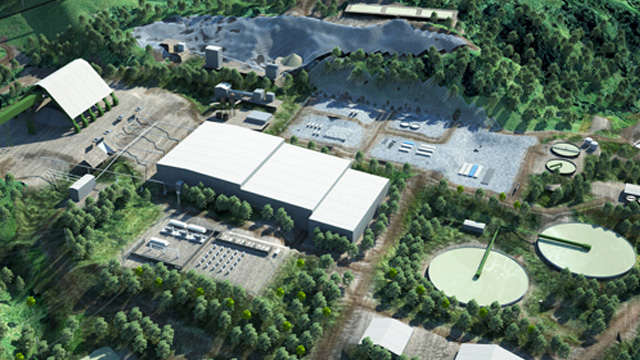SUMMARY
This is AI generated summarization, which may have errors. For context, always refer to the full article.

MANILA, Philippines – Saying it would discourage investments in mining, industry players asked Malacañang to review the mining taxation scheme proposed by the Mining Industry Coordinating Council (MICC).
In a letter to the Office of the President dated July 3, the Chamber of Mines of the Philippines (COMP) said the MICC did not consider their suggestions in formulating the revenue-sharing structure.
“We are dismayed that the MICC had moved forward with a proposed increased tax policy without taking into consideration comments and observations not only from the mining industry that will be directly affected by said policy but by authoritative third parties,” COMP said.
The MICC, in May, approved the imposition of either a 10% tax on gross revenues or a tax of 55% on adjusted net mining revenues (ANMR) plus a percentage of windfall profit, whichever will give higher revenues to the government. ANMR refers to the difference between gross sales and direct cost (direct mining cost and administrative expenses).
Contractors will still pay real property tax, stock transaction tax, documentary stamp tax, withholding tax on passive income, as well as regulatory fees and charges.
Incentives to mining investments shall be limited to duty-free importation of specialized capital equipment and 5-year amortization of pre-operating expenses.
The new revenue sharing scheme will apply to metallic mining projects holding a Mineral Production Sharing Agreement (MPSA) and Financial Technical Assistance Agreement. (FTAA).
“The MICC-proposed tax structure cannot, by any measure, be considered fair or equitable, much less competitive,” COMP said. “It will not attract quality investment that the country needs to be able to develop its mineral resources in a responsible manner.”
COMP also noted that the results of its financial modeling showed that the Philippine government’s share under such proposal would be “much higher” than the share of large mineral producing countries such as Canada, Australia, Peru, South Affrica, Chile, Papua New Guinea.
The chamber is instead proposing a revenue-sharing scheme based on the actual profits made by mining firms.
“We are open to the idea of a sliding tax rate which is based on income,” said COMP vice president for legal and policy Ronald Recidoro.
Under a sliding tax rate system, tax rates depend on metal prices.
Recidoro said this would help miners sustain production during difficult market conditions. In turn, the government would enjoy a higher share when miners rake in bigger profits.
There is a bill pending in Congress for the imposition of a sliding tax rate system for the extractive industry authored by 1-BAP Rep. Silvestre Bello III and Taguig City Rep. Lino Cayetano.
Under House Bill 3586 or “An Act Rationalizing Revenue-Sharing in the Large-Scale Metallic Mineral Resource Industry”, the government gets 2% to 5% of the net mining profits from gold when world prices are below $1,440 per ounce to over $2,200 per ounce.
For copper, the government gets 2% from the net mining revenue when the price of metal in the world market is below $2.50 per pound, to a high of 5% if the price hits more than $4.40 per pound.
For nickel, chromite and other metallic minerals and ores, the government gets a fixed royalty of 7% from the net mining revenue if the resource is taken within a proclaimed mineral reservation.
If extracted outside a proclaimed mineral reservation, a fixed royalty of 4% is imposed.
COMP Executive Vice President Nelia Halcon said the chamber may back the passage of the bill into law.
“That is an option for us but we are still communicating with Malacañang,” she said.
The MICC is a joint committee of the Economic Development Cluster and the Climate Change Cluster created under Executive Order 79 tasked to formulate a new revenue sharing scheme between the government and mining companies.
Since the issuance of the new mining policy (Executive Order 79) in July 2012, the government has stopped granting new mining contracts while a new taxation regime is being finalized.
Under the present system, mining companies operating under an MPSA pay the regular corporate income tax, 2% excise tax, business tax, royalty payments for indigenous peoples directly affected by mining operations, and royalty for mineral products extracted from mineral reservations
Those firms that operate in mineral reservation areas also pay an additional 5% royalty.
Those that operate under an FTAA shall share 50% of their revenues with the government.
Today, only OceanaGold Philippines, the local arm of Australian miner OceanaGold Corporation, operates under an FTAA. It operates the Didipino copper-gold mine in Nueva Vizcaya. – Rappler.com
Add a comment
How does this make you feel?
There are no comments yet. Add your comment to start the conversation.